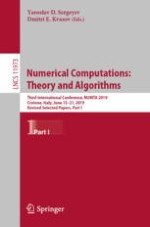2020 | OriginalPaper | Buchkapitel
A Computational Approach with MATLAB Software for Nonlinear Equation Roots Finding in High School Maths
verfasst von : Annarosa Serpe
Erschienen in: Numerical Computations: Theory and Algorithms
Aktivieren Sie unsere intelligente Suche, um passende Fachinhalte oder Patente zu finden.
Wählen Sie Textabschnitte aus um mit Künstlicher Intelligenz passenden Patente zu finden. powered by
Markieren Sie Textabschnitte, um KI-gestützt weitere passende Inhalte zu finden. powered by
